®
Handheld Computer
OPERATING INSTRUCTIONS
Model No. CF-P1Series
Contents
Getting Started
Operation
Read Me First ..........................................................3
Precautions............................................................. 6
What’s in the Box? ................................................. 9
Names and Functions of Parts ............................. 10
First-time Operation.............................................. 13
Starting Up/Shutting Down ................................... 16
LCD (Touchscreen) .............................................. 20
Backlight Setting................................................... 22
Entering Information ............................................. 23
Program Buttons .................................................. 28
Battery Power ....................................................... 29
SD Memory Card/MultiMedia Card....................... 31
Panasonic Backup ................................................ 32
Pocket Internet Explorer ....................................... 35
Connecting to Your Computer .............................. 36
Customizing the Computer ................................... 40
Troubleshooting
Dealing with Problems .......................................... 43
Appendix
For Effective Use .................................................. 47
Specifications ....................................................... 48
LIMITED USE LICENSE AGREEMENT ............... 50
Please read this instructions manual carefully before using this product and save this manual
for future use.
�
Customer's Record
Dealer's Name
Dealer's Address
Model No.*
Serial No.
or
Code No.
Date of Purchase
* For the Model No., insert the 12 digit number (for example, CF-P1P3CDZ6M) located on the back
of the computer.
Introduction
Thank you for purchasing the Panasonic Handheld Computer. Read the operating instruc-
tions thoroughly for proper operation of your new computer.
Illustrations and Terminology in this Manual
NOTE:
CAUTION:
NOTE provides a useful fact or helpful information.
CAUTION indicates a condition that may result in minor or moder-
ate injury.
This illustration means to tap
tap [Programs].
at the top of the screen, then to
- [Programs]:
< For the CF-P1P3 series >
:
This illustration means to press the [A] key.
Mode key + NUM key: This illustration means to press and hold the [ ] key (Mode key),
< For the CF-P1P1 series >
then press the [NUM ] key.
:
:
Some of the illustrations in this manual may differ slightly in shape from the actual items in
order to make the explanation easier to understand.
This illustration means to press the [1] key.
Where to go for referred information.
This operating instructions describes the models below.
Note however that the illustrations mainly show the CF-P1P3 series.
CF-P1P3 series
(QWERTY key
type keyboard)
CF-P1P1 series
(numeric keypad
type keyboard)
2
�
Read Me First
For U.S.A.
Federal Communications Commission Radio Frequency Interference Statement
Note: This equipment has been tested and found to comply with the limits for a Class B
digital device, pursuant to Part 15 of the FCC Rules. These limits are designed to provide
reasonable protection against harmful interference in a residential installation. This equipment
generates, uses and can radiate radio frequency energy and, if not installed and used in
accordance with the instructions, may cause harmful interference to radio communications.
However, there is no guarantee that interference will not occur in a particular installation. If
this equipment does cause harmful interference to radio or television reception, which can
be determined by turning the equipment off and on, the user is encouraged to try to correct
the interference by one or more of the following measures:
Reorient or relocate the receiving antenna.
Increase the separation between the equipment and receiver.
Connect the equipment into an outlet on a circuit different from that to which the receiver
is connected.
Consult the Panasonic Service Center or an experienced radio/TV technician for help.
Warning
To assure continued compliance, use only shielded interface cables when connecting to a
computer or peripheral. Also, any changes or modifications not expressly approved by the
party responsible for compliance could void the user’s authority to operate this equipment.
This device complies with Part 15 of the FCC Rules. Operation is subject to the following
two conditions:
(1) This device may not cause harmful interference, and
(2) This device must accept any interference received, including interference that may cause
undesired operation.
Responsible Party: Matsushita Electric Corporation of America
One Panasonic Way
Secaucus, NJ 07094
Tel No: 1-800-LAPTOP-5 (1-800-527-8675)
Notice for the products using LCD
This product uses one or more fluorescent lamps containing a small amount of mercury. It
also contains lead in some components. Disposal of these materials may be regulated in your
community due to environmental considerations. For disposal or recycling information please
contact your local authorities, or the Electronics Industries Alliance:
3
�
Read Me First
For U.K.
on the body of the fuse.
Warning
This apparatus must be earthed for your safety.
To ensure safe operation the three-pin plug must be inserted only into a standard three-pin power
point which is effectively earthed through the normal household wiring.
Extension cords used with the equipment must be three-core and be correctly wired to provide
connection to earth. Wrongly wired extension cords are a major cause of fatalities.
The fact that the equipment operates satisfactorily does not imply that the power point is earthed and
that the installation is completely safe.
For your safety, if you have any doubt about the effective earthing of the power point, consult a
qualified electrician.
FOR YOUR SAFETY PLEASE READ THE FOLLOWING TEXT CAREFULLY
This appliance is supplied with a moulded three pin mains plug for your safety and convenience.
A 3 amp fuse is fitted in this plug.
Should the fuse need to be replaced please ensure that the replacement fuse has a rating of 3 amps
and that it is approved by ASTA or BSI to BS 1362.
Check for the ASTA mark A S A or the BSI mark
If the plug contains a removable fuse cover you must ensure that it is refitted when the fuse is
replaced.
If you lose the fuse cover the plug must not be used until a replacement cover is obtained.
A replacement fuse cover can be purchased from your local Panasonic Dealer.
IF THE FITTED MOULDED PLUG IS UNSUITABLE FOR THE SOCKET OUTLET IN YOUR
HOME THEN THE FUSE SHOULD BE REMOVED AND THE PLUG CUT OFF AND DIS-
POSED OF SAFELY.
THERE IS A DANGER OF SEVERE ELECTRICAL SHOCK IF THE CUT OFF PLUG IS IN-
SERTED INTO ANY 13 AMP SOCKET.
If a new plug is to be fitted please observe the wiring code as shown below.
If in any doubt please consult a qualified electrician.
Warning: THIS APPLIANCE MUST BE EARTHED.
Important
The wires in this mains lead are coloured in accordance with the following code:
Green-and-yellow:
Blue:
Brown:
As the colours of the wires in the mains lead of this apparatus may not correspond with the coloured
markings identifying the terminals in your plug, proceed as follows:
The wire which is coloured GREEN-and-YELLOW must be connected to the terminal in the plug
which is marked by the letter E or by the safety earth symbol
YELLOW.
The wire which is coloured Blue must be connected to the terminal which is marked with the letter N
or coloured BLACK.
The wire which is coloured Brown must be connected to the terminal which is marked with the letter
L or coloured RED.
The mains plug on this equipment must be used to disconnect the mains power.
Please ensure that a socket outlet is available near the equipment and shall be easily accessible.
coloured GREEN or GREEN-and-
Earth
Neutral
Live
4
�
How to replace the fuse
Open the fuse compartment with a screwdriver and replace the fuse.
Warnings
This equipment is not designed for connection to an IT power system.
(An IT system is a system having no direct connections between live parts and Earth; the exposed-
conducive-parts of the electrical installation are earthed.
An IT system is not permitted where the computer is directly connected to public supply systems in
the U.K.)
Disconnect the mains plug from the supply socket when the computer is not in use.
This equipment is produced to BS800/1983.
For Europe
Declaration of Conformity (DoC)
“Hereby, we and Panasonic Service Europe GmbH (PSE), declares that
this Personal Computer is in compliance with the essential requirements
and other relevant provisions of EU Council Directives.”
Hint:
If you want to get a copy of the original DoC of our products, please
contact to our web address: http://doc.panasonic-tc.de
----------------------------------------------------------------------
Compliance Notice - CE Mark
This equipment is in conformance with the requirements of the European Council Directive
listed below:
73/23/EEC Low Voltage Directive with amendment 93/68/EEC
89/336/EEC EMC Directive with amendments 92/31/EEC and 93/68/EEC
-------------------------------------------------------------------------
Interface Cable
Use of an interface cable longer than 3 m (9.84 feet) is not recommended.
Lithium Battery
Lithium Battery!
This computer contains a lithium battery to enable the date, time, and other data to be stored.
The battery should only be exchanged by authorized service personnel.
Warning! A risk of explosion from incorrect installation or misapplication may possibly occur.
5
�
Precautions
The CF-P1 was developed based on thorough research into real-world portable computing
environments. Exhaustive pursuit of usability and reliability under harsh conditions led to
innovations such as the magnesium alloy exterior and flexible internal connections.
The CF-P1's outstanding engineering has been tested using the stiff MIL-STD- 810F (for
vibration and shock) and IP (for dust and water) based procedures.
As with any portable computer device precautions should be taken to avoid to the CF-P1
damage. The following usage and handling procedures are recommended.
Before putting the computer away, be sure to wipe off any moisture.
Avoid Extreme Heat and Cold
Do not store or use the computer in locations
exposed to heat (in an automobile on a sunny
day, for example), direct sunlight, or extreme
cold.
Avoid moving the computer between locations
with large temperature differences.
Operation
Temperature: -20 oC to 50 oC {-4 oF to 122 oF}
Humidity:
30 % to 80 % RH (No condensation)
Storage
Temperature: -25 oC to 60 oC {-13 oF to 140 oF}
Humidity:
30 % to 90 % RH (No condensation)
Avoid Radio Frequency Inter-
ference
Do not place the computer near
a television or radio receiver.
Be careful of low-temperature
burns
Avoid more than casual contact
with any heat producing area of
the computer, AC adaptor, and
any option or accessory you use
with it. Even low heat, if warmer
than the body’s temperature, can
cause burns, if the skin is exposed
to the heat source for a long
enough period of time.
Avoid Magnetic Fields
Keep the computer away from
magnets.
Avoid Stacking
Do not place heavy objects on
the computer.
6
Keep Small Objects Away
Do not insert paper clips or other
small objects into the computer.
Do Not Disassemble the com-
puter
Do not attempt to disassemble
your computer.
Avoid Excessive Force on the
LCD
Do not apply excessive down-
ward force on the LCD.
Keep SD memory cards and
MultiMedia Cards (both sold
separately) away from infants
and small children.
Accidental swallowing will re-
sult in bodily injury.
In the event of accidental swal-
lowing, see a doctor immedi-
ately.
Handling
Do not drop or hit your computer against
solid objects.
Remove all cables before transporting your
computer.
We recommend that the battery be fully
charged. We also recommend that the
backup battery (a built-in coin type bat-
tery) be fully charged.
When transporting spare batteries inside a
package, briefcase, etc., we recommend
that the batteries be stored in a plastic bag.
�
Handling (continued)
Always carry your computer with you when traveling. Never check it in with luggage. For
use of the computer inside an aircraft, we recommend asking the airlines regarding their
policy on this issue.
It is a good idea to make backup copies on SD memory cards/MultiMedia Cards and carry
them with you.
Battery Pack
Care should be exercised with regard to the
following in order to avoid the possibility
of over-heating, fire, or damage.
Avoid Heat
Do not throw the battery pack
into a fire or expose it to exces-
sive heat.
Keep Articles Away
Do not place the battery pack to-
gether with articles such as neck-
laces or hairpins when carrying
or storing.
Do Not Disassemble
Do not insert sharp objects into
the battery pack, expose it to
bumps or shocks, or deform, dis-
assemble, or modify it.
Do Not Short
Do not short the positive (+) and
negative (-) contacts.
Avoid Extreme Heat, Cold and
Direct Sunlight
Do not charge, use or leave the
battery pack for extended peri-
ods where it will be exposed to
direct sunlight, in a hot place (in
an automobile on a sunny day,
for example), or in a cold place.
Do Not Put Into a Microwave
Do not put the battery pack into
a microwave oven or a pressur-
ized chamber.
Do Not Use With Any Other
Device
The battery pack is rechargeable
and was intended for the speci-
fied computer. Do not use it with
a device other than the one for
which it was designed.
Stop Using
Should the battery emit an ab-
normal odor, become hot to the
touch, become discolored,
change shape, or become in any
way different from normal, re-
move it from the computer and
stop using it.
If the battery pack will not be used for a
long period of time (a month or more),
charge or discharge (use) the battery pack
until the remaining battery level becomes
30 % to 40 % and store it in a cool, dry
place.
The battery pack is not charged when the
computer is first purchased. Be sure to
charge it before using it for the first time.
When the AC adaptor is connected to the
computer, charging begins automatically.
If the battery leaks and the fluid get into
your eyes, do not rub your eyes. Immedi-
ately flush your eyes with clear water and
see a doctor for medical treatment as soon
as possible.
7
�
Precautions
About High Temperature Mode
This computer has a high temperature mode function that prevents the degradation of the
battery in high temperature environments. We recommend setting the high temperature
mode function when installing the computer in a car, etc. To do this, set [Charging mode:]
- [Settings] - [System] tab - [Panasonic Settings] - [Charging Mode] tab*1 to [High
in
Temperature]. In the high temperature mode, the full charge capacity of battery becomes
approximately 70 %.
*1 To display the hidden tab, tap the
on the right edge of the tab.
NOTE
The battery pack may become warm during recharging or normal use. This is completely
normal.
Recharging will not commence outside of the allowable temperature range (5 °C to 40 °C
{41°F to 104°F})*2. Even if charging stops because the temperature is outside the
charging temperature range, the battery indicator will remain in the illuminated orange.
Once the allowable range requirement is satisfied, charging begins automatically. Note
that the recharging time varies based on the usage conditions. (Recharging takes longer
than usual when the temperature is 10 °C {50 °F} or below.)
If the temperature is low, the operating time is shortened. Only use the computer within
the allowable temperature range.
The battery pack is a consumable item. If the amount of time the computer can be run off
a particular battery pack becomes dramatically shorter and repeated recharging does
not restore its performance, the battery pack should be replaced with a new one.
When a spare battery pack is to be carried in a pocket or bag, it is recommended that it
be placed in a plastic bag so that its contacts are protected.
Always power off the computer when it is not in use. Leaving the computer on when the
AC adaptor is not connected will exhaust the remaining battery capacity.
*2These temperature settings are valid when the battery is charging and the computer is off.
The temperature range may become narrower when the battery is charging and the com-
puter is operating.
When Using Peripheral Devices
Pay strict attention to the following points to avoid damage to the computer, peripheral de-
vices, cables, etc. Also, in addition to following this manual, carefully read the instruction
manuals for the peripheral devices being used.
Use only peripheral devices that conform to the computer’s specifications.
Connect the devices properly, paying close attention to the condition and position of the
connectors.
If a connection cannot be made easily, do not apply undue force; check once more to
confirm the condition and position of the connector (alignment of pins, etc.).
If the connector has holding screws, fasten the screws firmly.
Do not carry the computer with cables attached, and do not pull on the cables forcefully.
8
�
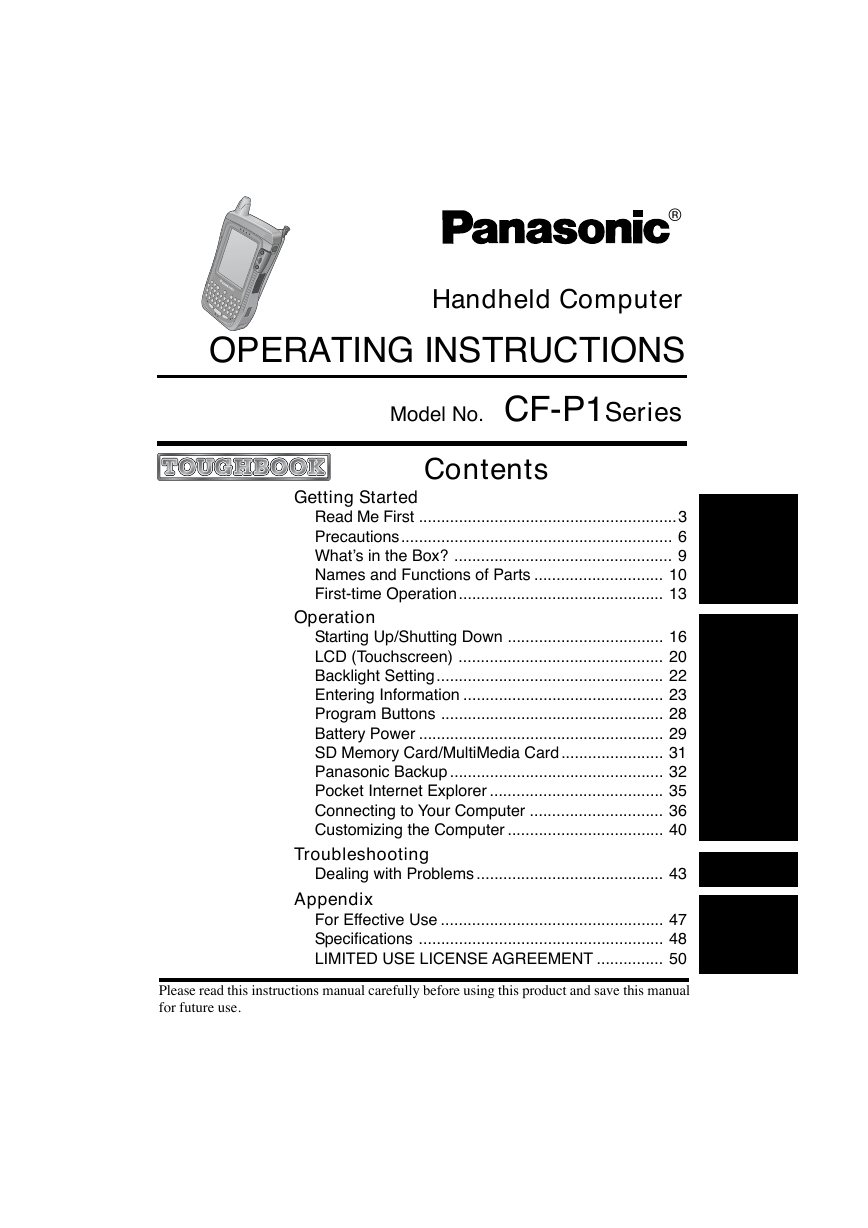
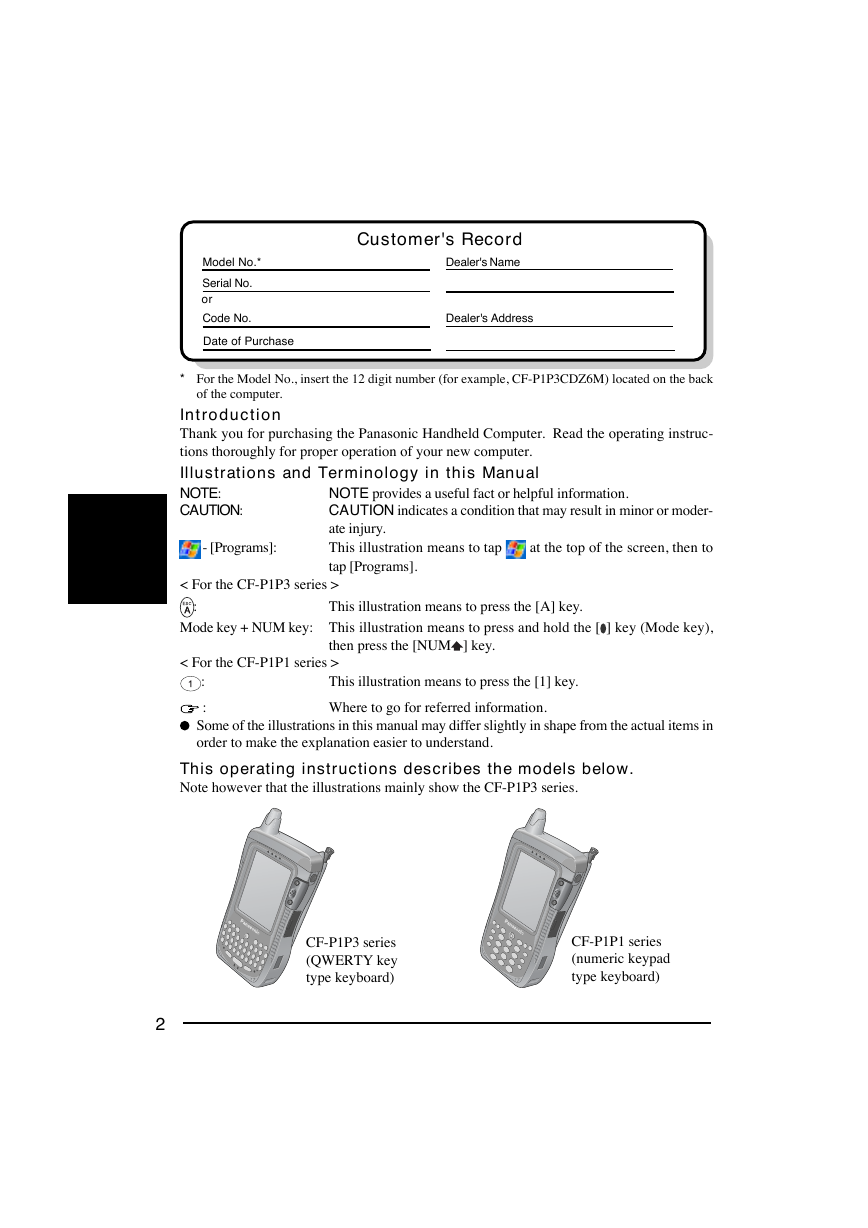

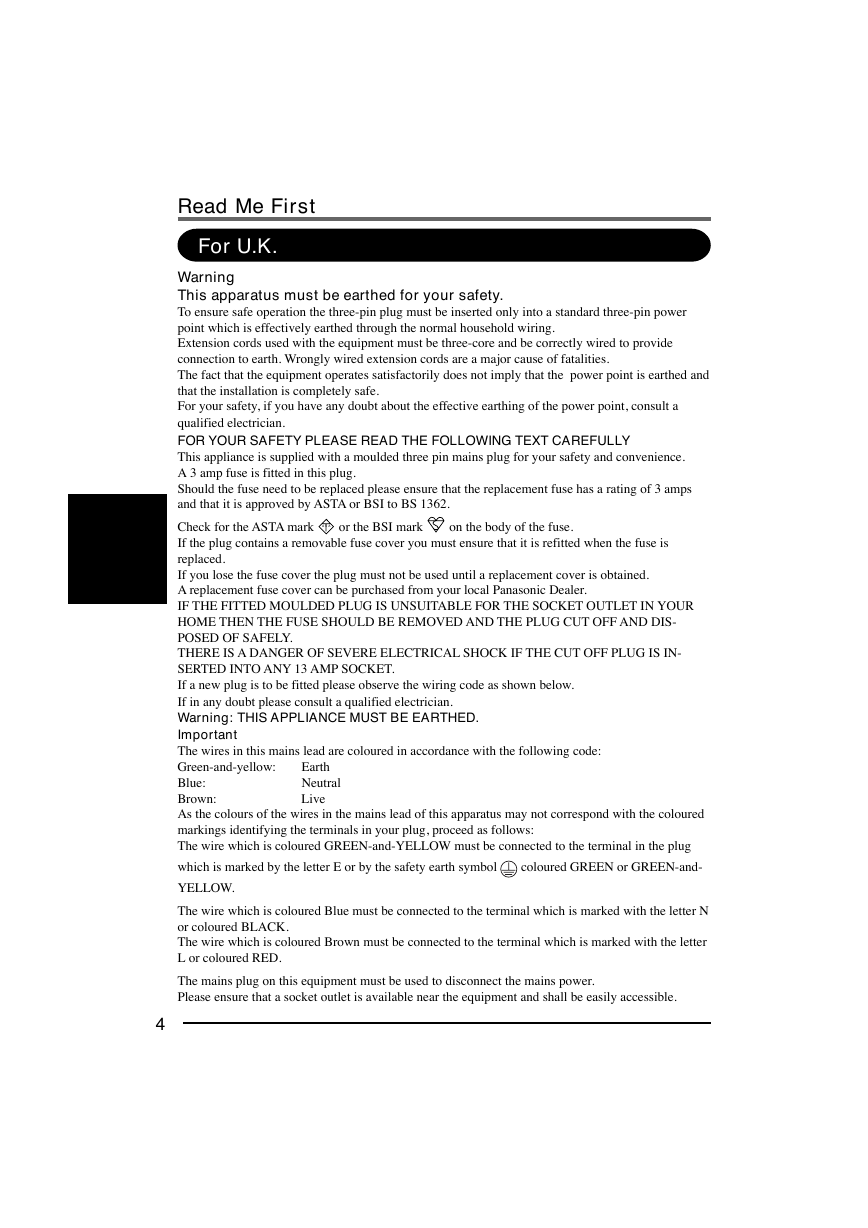
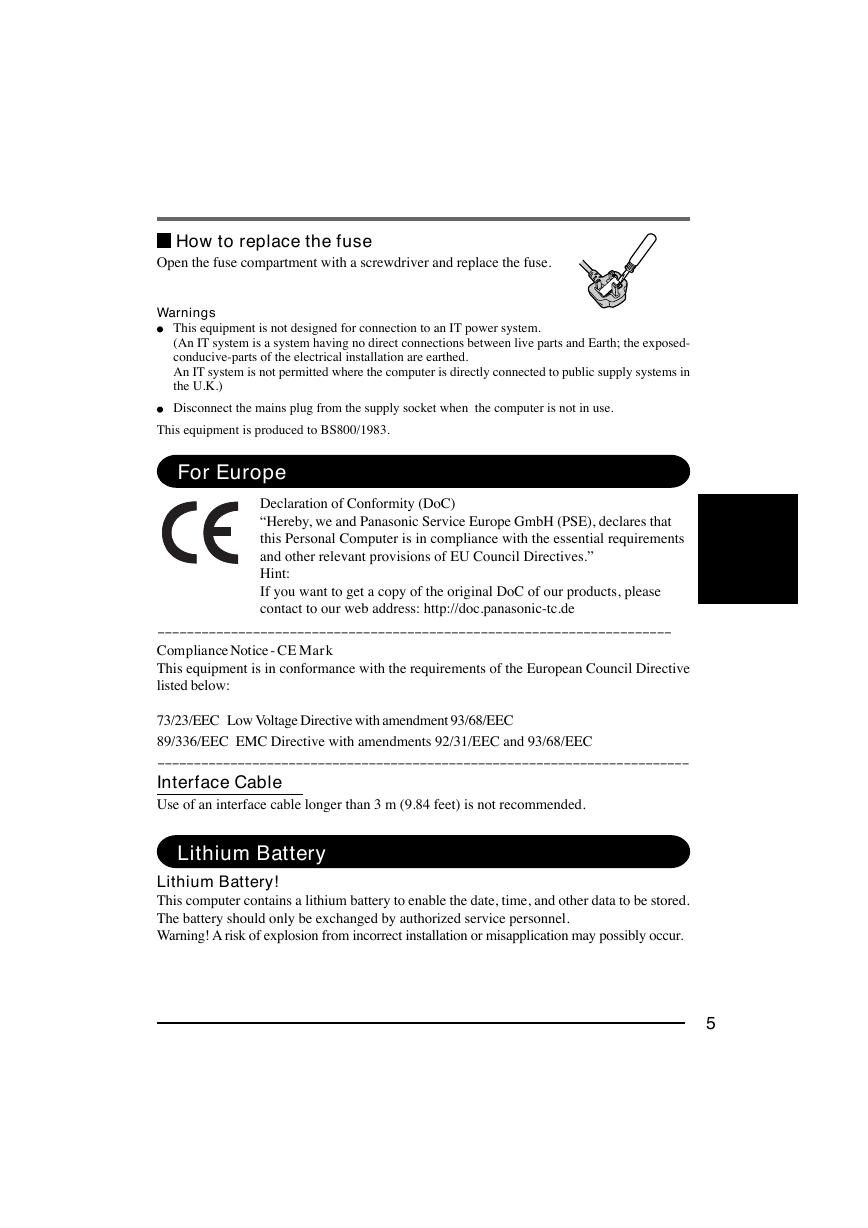
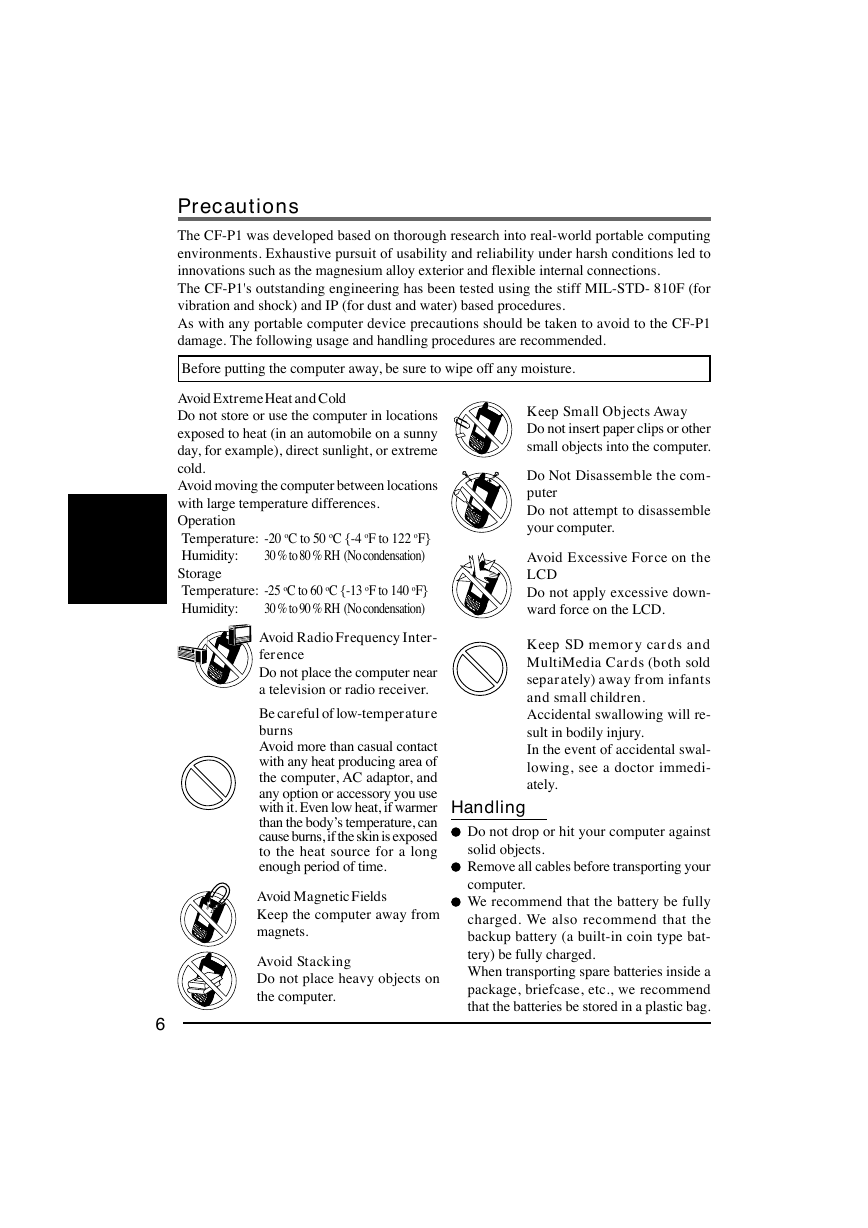
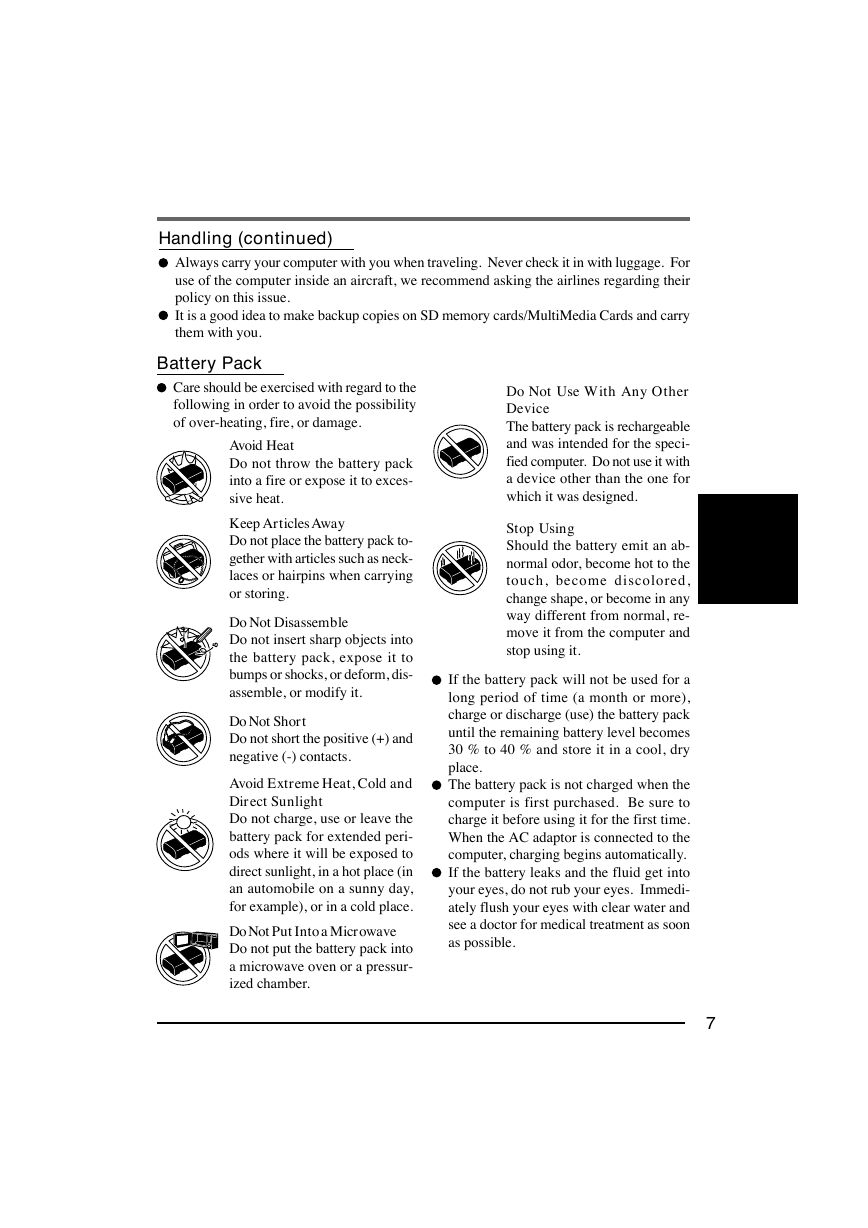
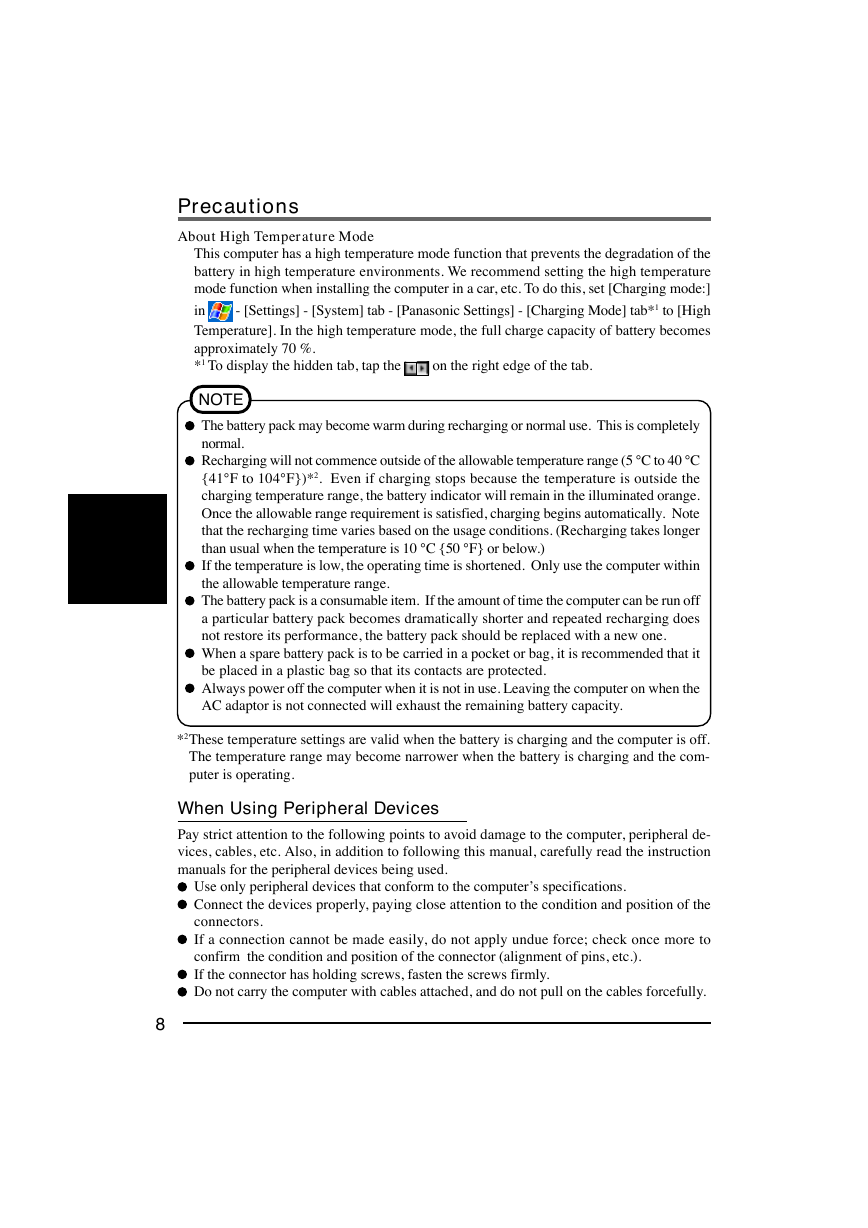








 2023年江西萍乡中考道德与法治真题及答案.doc
2023年江西萍乡中考道德与法治真题及答案.doc 2012年重庆南川中考生物真题及答案.doc
2012年重庆南川中考生物真题及答案.doc 2013年江西师范大学地理学综合及文艺理论基础考研真题.doc
2013年江西师范大学地理学综合及文艺理论基础考研真题.doc 2020年四川甘孜小升初语文真题及答案I卷.doc
2020年四川甘孜小升初语文真题及答案I卷.doc 2020年注册岩土工程师专业基础考试真题及答案.doc
2020年注册岩土工程师专业基础考试真题及答案.doc 2023-2024学年福建省厦门市九年级上学期数学月考试题及答案.doc
2023-2024学年福建省厦门市九年级上学期数学月考试题及答案.doc 2021-2022学年辽宁省沈阳市大东区九年级上学期语文期末试题及答案.doc
2021-2022学年辽宁省沈阳市大东区九年级上学期语文期末试题及答案.doc 2022-2023学年北京东城区初三第一学期物理期末试卷及答案.doc
2022-2023学年北京东城区初三第一学期物理期末试卷及答案.doc 2018上半年江西教师资格初中地理学科知识与教学能力真题及答案.doc
2018上半年江西教师资格初中地理学科知识与教学能力真题及答案.doc 2012年河北国家公务员申论考试真题及答案-省级.doc
2012年河北国家公务员申论考试真题及答案-省级.doc 2020-2021学年江苏省扬州市江都区邵樊片九年级上学期数学第一次质量检测试题及答案.doc
2020-2021学年江苏省扬州市江都区邵樊片九年级上学期数学第一次质量检测试题及答案.doc 2022下半年黑龙江教师资格证中学综合素质真题及答案.doc
2022下半年黑龙江教师资格证中学综合素质真题及答案.doc